Zoom’s H6essential puts clip-free recording in the palm of your hand
Zoom is going all-in on 32-bit float with its new range of handy recorders – but does the flagship trade away too much functionality?
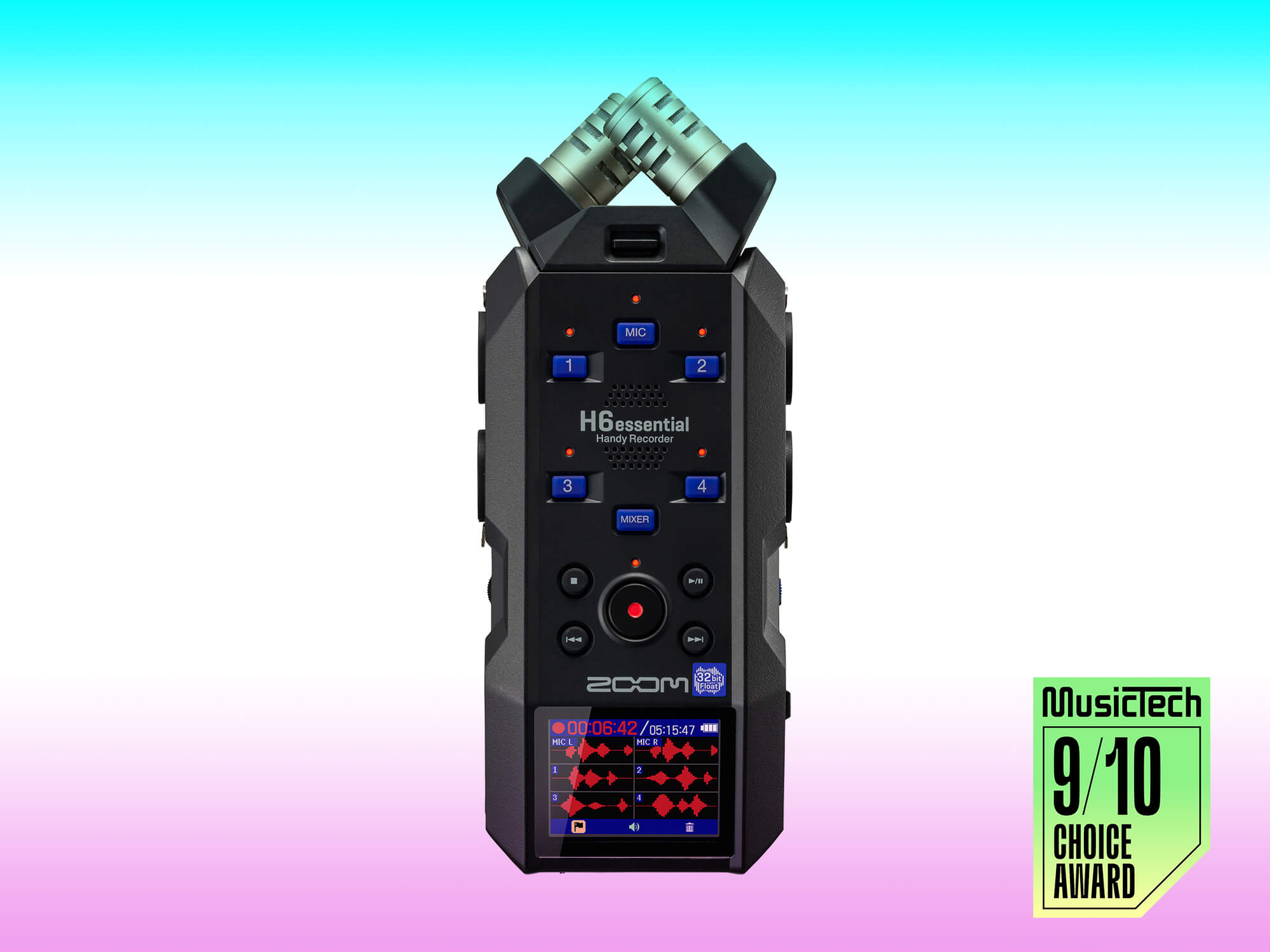
Zoom H6essential
Review Overview
Our rating
9
Our verdict
⊕ Larger storage options
⊕ New accessibility functions
⊕ X-Y mic capsule is crisp and great for spot recording
⊖ New capsule design is less ergonomic
⊖ Mixer view is minimalist to a fault
£285, zoomcorp.com
In the world of portable recorders, few names loom as large as Zoom. In its forty year history, the company has released a string of innovative products for on-location sound recording – all at extremely competitive prices. At NAMM this year, Zoom announced a big upgrade to its hugely popular H-series of handy recorders, and so, naturally, we had to take the flagship model out for a spin.
- READ MORE: Native Instruments’ Electric Keys – Tines Duo are among the best Rhodes emulations out there
Zoom’s H6 was a multipurpose powerhouse, boasting an interchangeable capsule mic system, four onboard XLR/TRS inputs, and the capacity to be used as a six-in/two-out audio interface. The new H6essential builds on this foundation with a number of improvements, the most important of which is its recording format – 32-bit float.
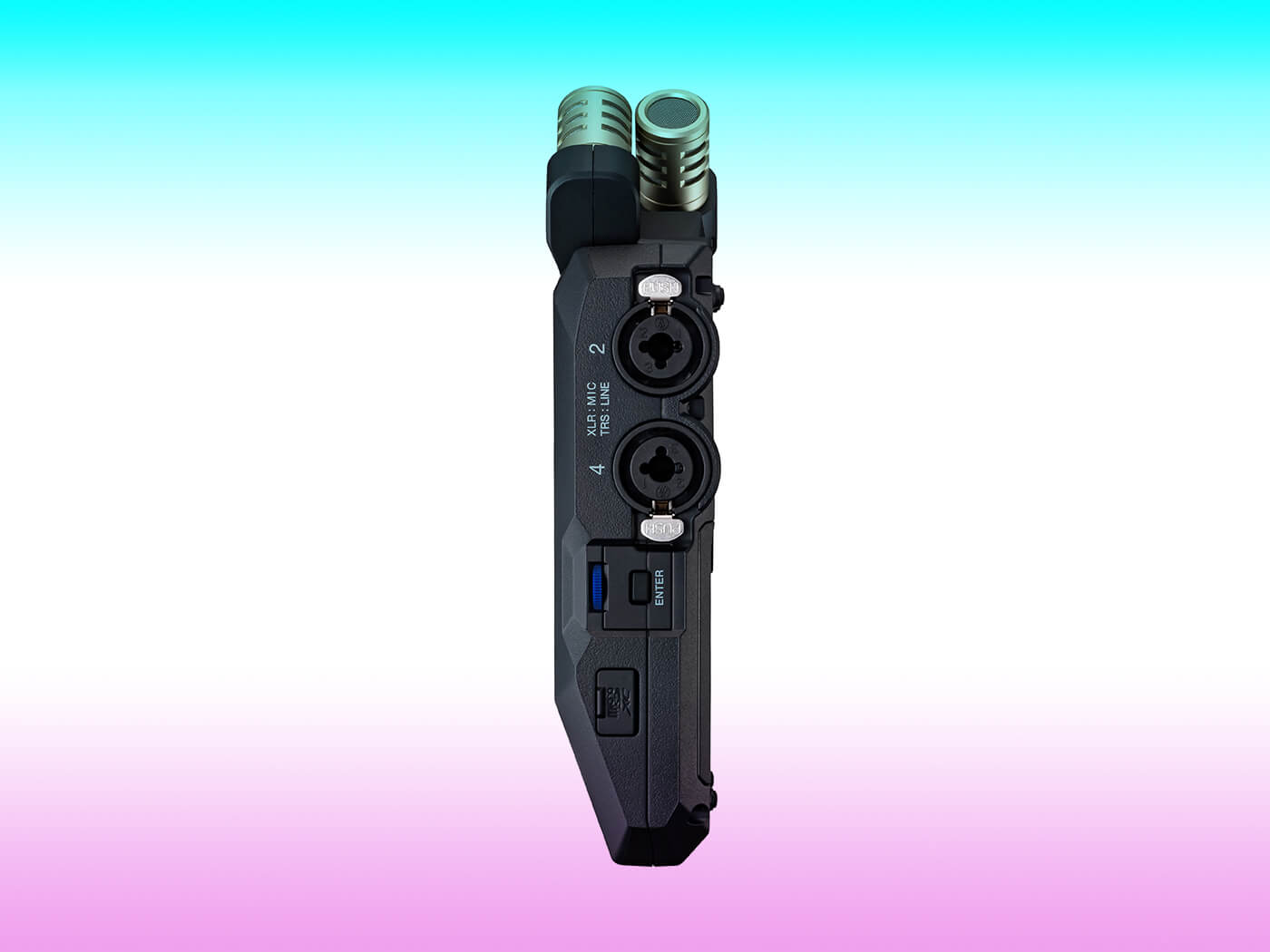
If you’re not familiar with this fairly recent development in recording formats, the selling point is simple. There’s no need to set gain levels and don’t worry about clipping — just hit record and walk away.
The H6essential achieves this marvel by using a pair of analogue-to-digital converters; one dedicated for low-volume sounds and the other for high volumes, with the recording stitched together as a 32-bit float audio file. The practical result is a portable recorder that can represent a staggering 1,528 dB of dynamic range, compared to 24-bit audio’s measly 144 dB.
With that kind of headroom, digital clipping becomes functionally impossible. Of course, you can still overload the microphone itself but, given that the H6essential’s built-in X-Y capsule handles levels up to 135 dB, this shouldn’t be a concern unless you’re out to record a jet engine.
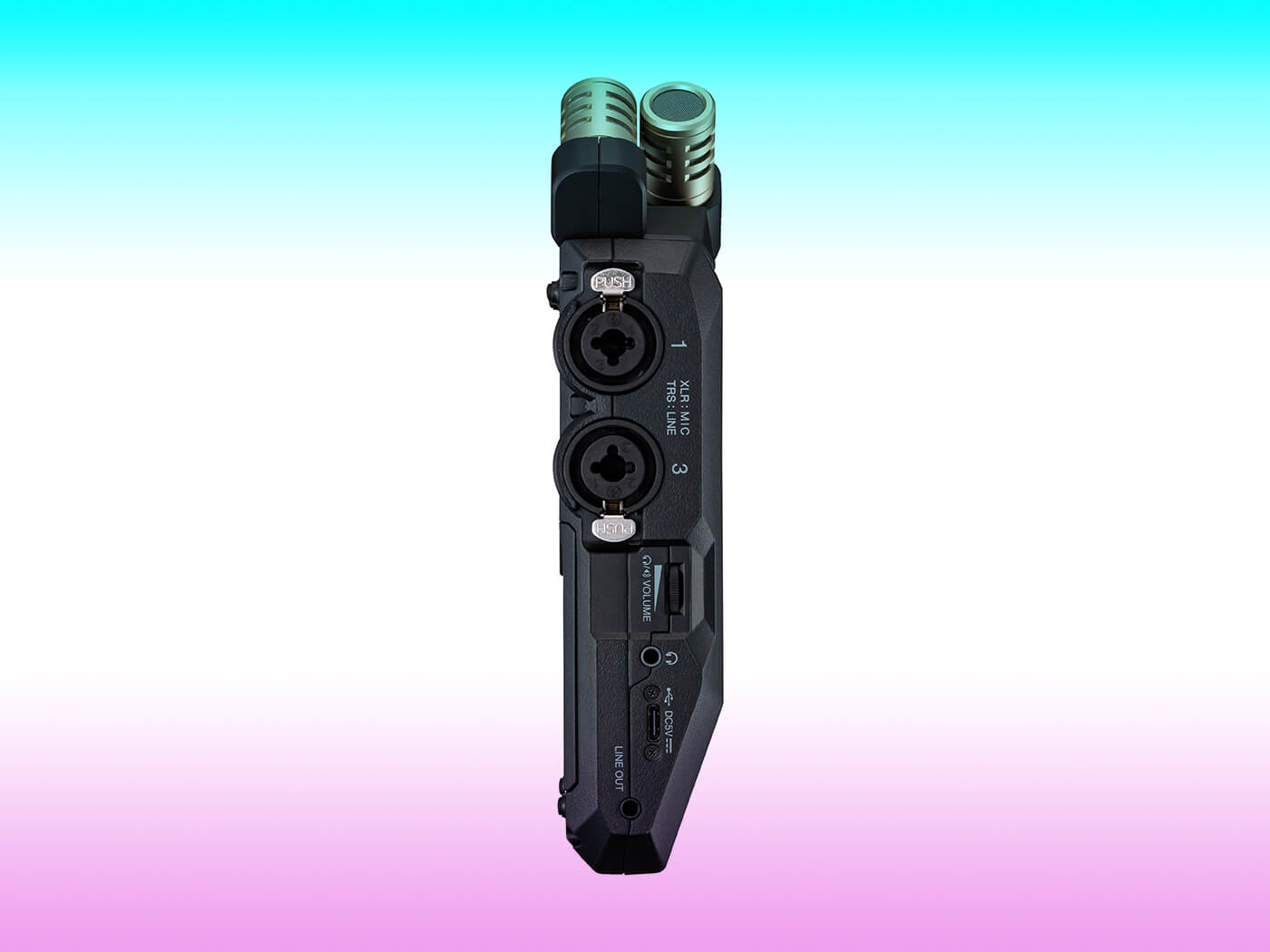
A ‘clip free’ workflow has serious benefits for all kinds of recording projects, but especially for those in unpredictable conditions. Let’s say you want to record yourself playing an acoustic gig at a local market – a gust of wind, a baby crying, a passing siren, any of these unexpected noises might clip a 24-bit recording. With the H6essential, those sounds will certainly still be audible, but they won’t introduce the kind of nasty digital distortion that can render audio all but unusable.
Furthermore, that gigantic dynamic range means you can record both very loud and very quiet sounds with the same gain setting, secure in the knowledge that they can be adjusted later.
We’re able to capture the hushed ambience of a library, a passing train, and a beer can being stomped on, all with no need to worry about input levels. After loading the files into a DAW, it’s a simple matter to balance the audio – the crushed can, which peaks at +13.4 dB, has a perfectly intact waveform once the volume is decreased. Boosting up the library ambience, which peaks at around -30 dB, introduces no audible increase in the noise floor.
Working without the need to set input levels is truly liberating. However, you actually can’t set those levels even if you want to: Zoom has leaned into the benefits of 32-bit float so completely that they’ve designed the H6essential with no direct gain controls whatsoever. There is also no option to change the bit-depth when using the device as a portable recorder, so if you wanted to drop down to 24-bit for some reason, then too bad.
On one level, this makes sense; 32-bit float means that you have an all-encompassing safety net and can always fix things in post-production. However, there are scenarios where it’s preferable to get your audio levels right at source without the need to load up a DAW later on. This is technically possible on the H6essential, but it means venturing into the Mixer view, something that is hard to recommend.
In the Mixer view, audio meters are rendered in grey, not the green, yellow, red traffic light system we all know and love. There are no decibel numbers on any of the tracks, but just a single ‘0’ on the master output. The greyscale makes it hard to see what’s going on in full sunlight and tracks must be adjusted one at a time via button presses and a dial located on the side of the unit. If you can manage to navigate all this, it is possible to set your recordings to ‘Post Mixer’ and get some control over the individual audio levels but, in truth, it would be far less painful to just do it in a DAW.
When it comes to sound quality, the H6essential comes with a bright and highly directional X-Y microphone capsule which is surprisingly good for spot recording. A busking harmonica player was kind enough to give us a short performance and the mic did a great job of focusing in on the instrument while minimising the sound of some children playing nearby.
As with its predecessor, that X-Y capsule can be swapped out for a shotgun mic or an extra two XLR inputs – both available as additional purchases. Unfortunately, if you already invested in extra microphones for your old H6, these won’t fit the new model’s redesigned capsule clip.
Speaking of that new clip design, it’s hard to see what improvement it offers. While the old capsules unclipped and lifted off the top of the recorder, the new design requires you to hold the catch down and slide the microphone forward and out. The first time you do this, it feels a bit awkward, but by the tenth time… it still feels a bit awkward.
There are undeniable trade-offs with the H6essential. Musician-friendly features found on the H6, such as built in compression, limiting, and a metronome are now gone, but, at the same time, there are a number of new, well thought-out features that make up for this. There’s a new Waveform screen which gives a nice, bright visualisation of the incoming audio, and of which tracks are currently recording, there’s now support for support for microSDXC cards up to 1TB, and the additional purchase of Zoom’s BTA-1 Bluetooth adapter means you can control the unit via an iOS device.
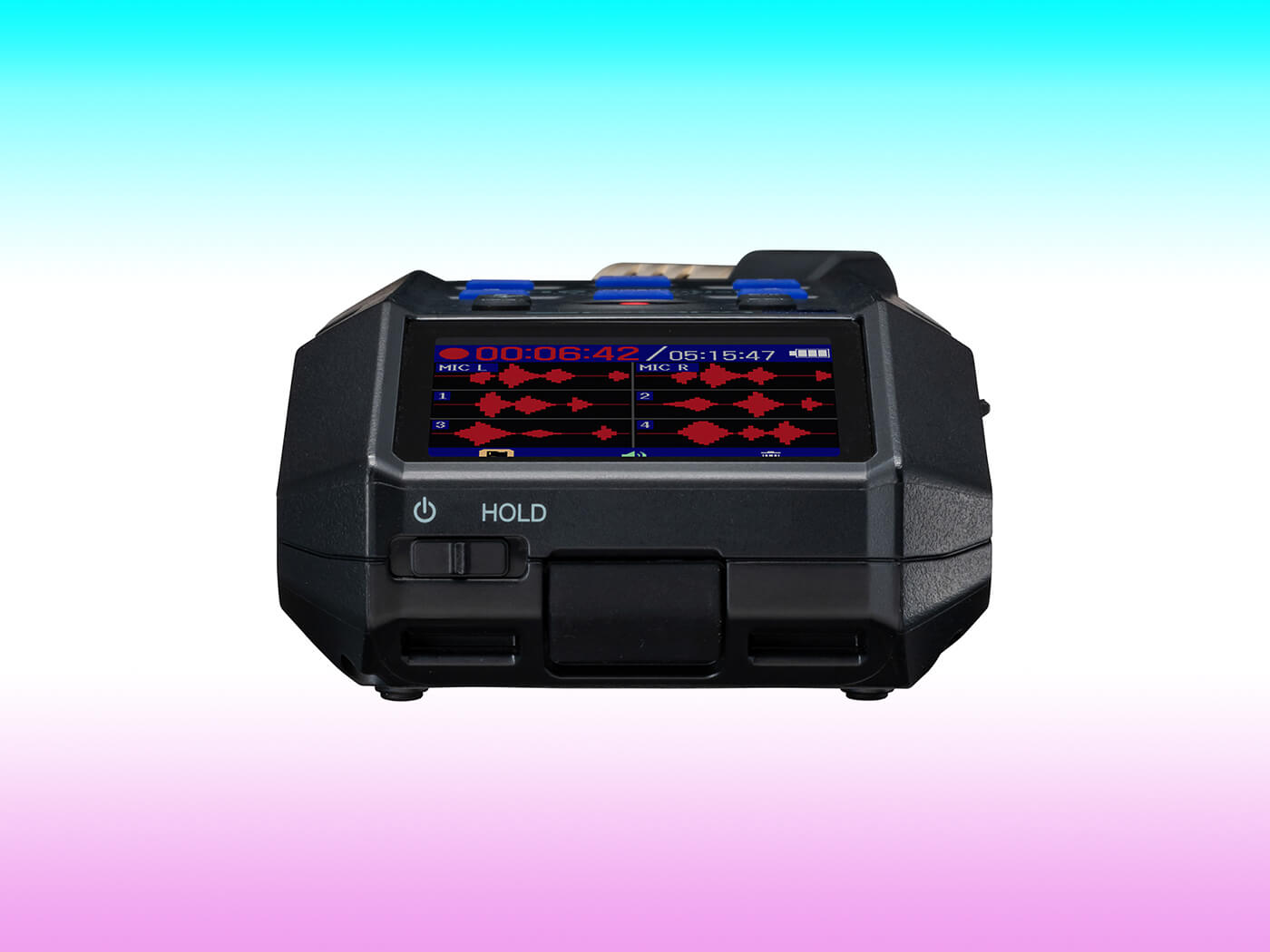
Also, there’s now a speaker situated in the centre of the unit’s front panel, and this can dispense accessibility instructions in seven different languages. Once the feature is turned on, a voice-over will read through menu options, tell you the battery level, and provide confirmation beeps when tracks are armed. This feature may not be a drawcard for everyone, but for those who need it, it’s fantastic.
Few devices try to wear as many hats as Zoom’s H-series. These recorders are used by musicians, podcasters, field recordists, and filmmakers – what’s incredible is that the company manages to offer genuine value to all of them.
There are shortcomings to be sure, but the H6essential packs a feature set that you won’t find anywhere else at this price-point. It remains the consummate all-rounder for portable recording.
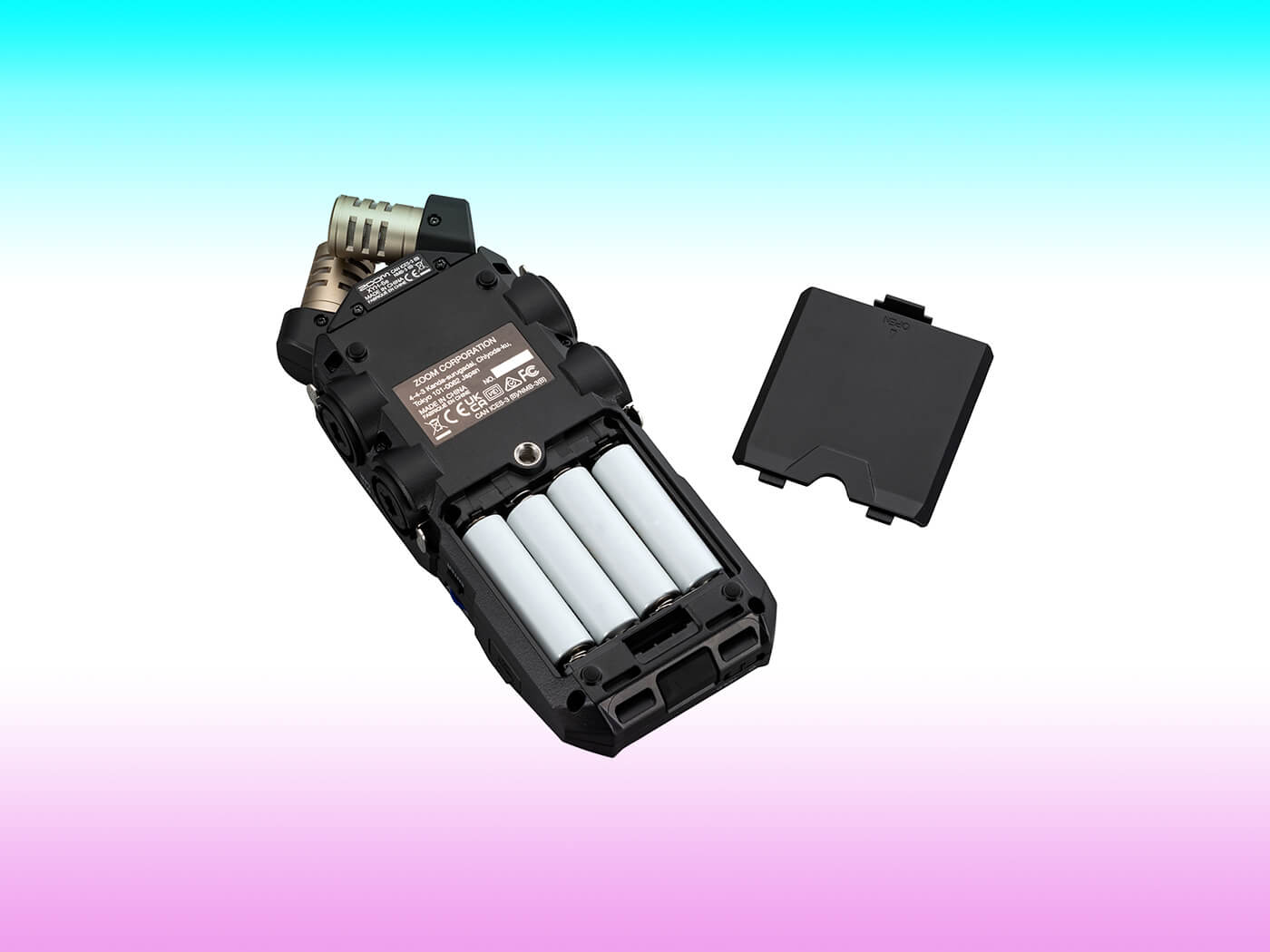
Key features
- 32-bit float recording
- 4 XLR/TRS inputs (expandable to 6)
- Supports microSDXC cards up to 1TB
- iOS App and timecode sync available with additional Bluetooth adapter